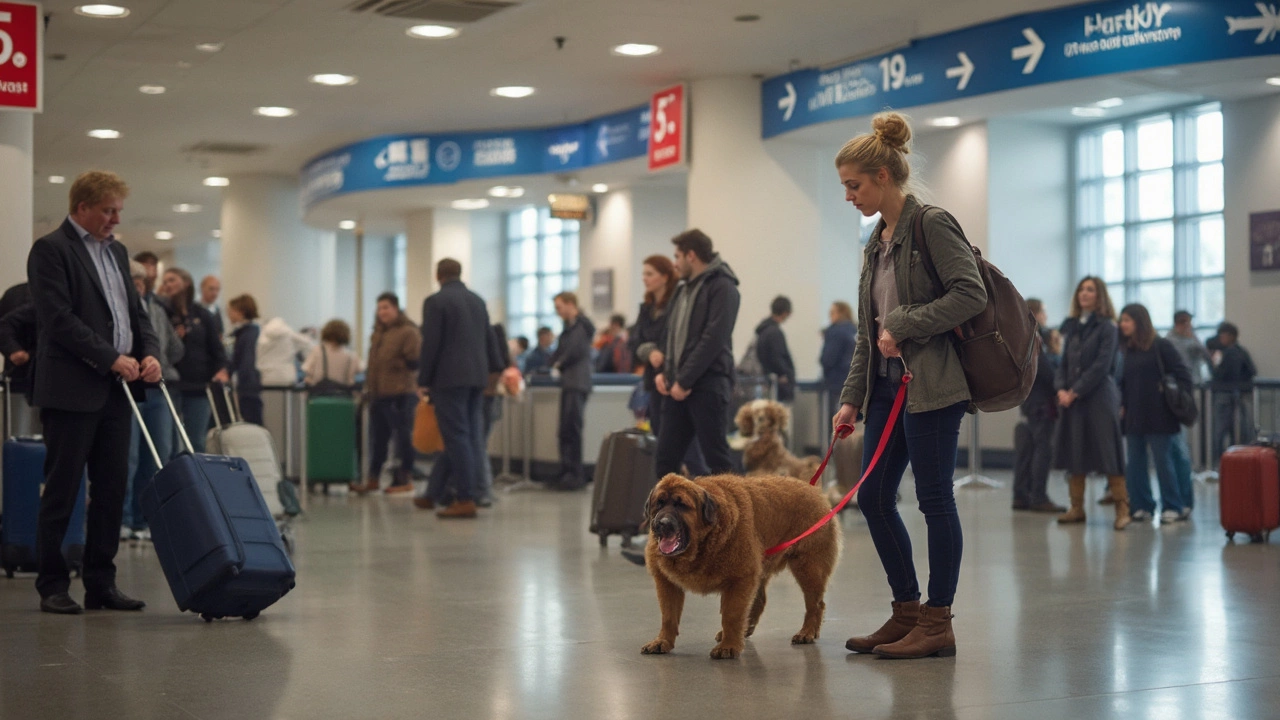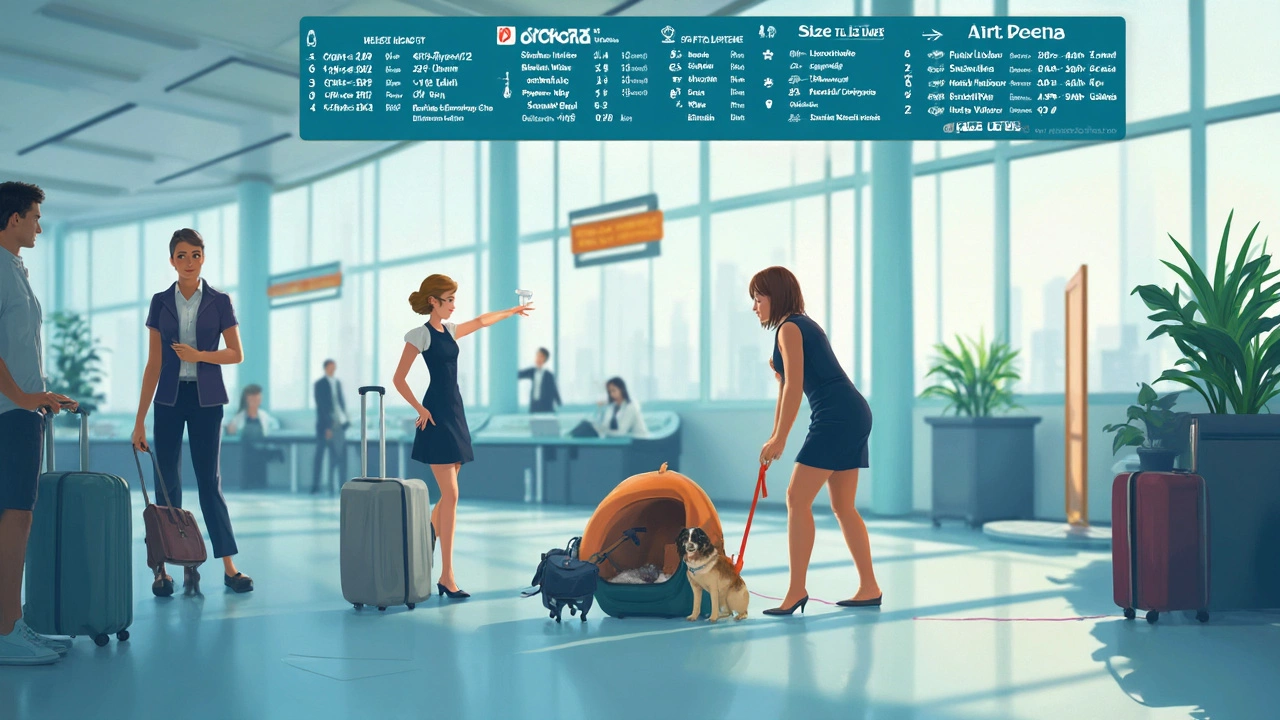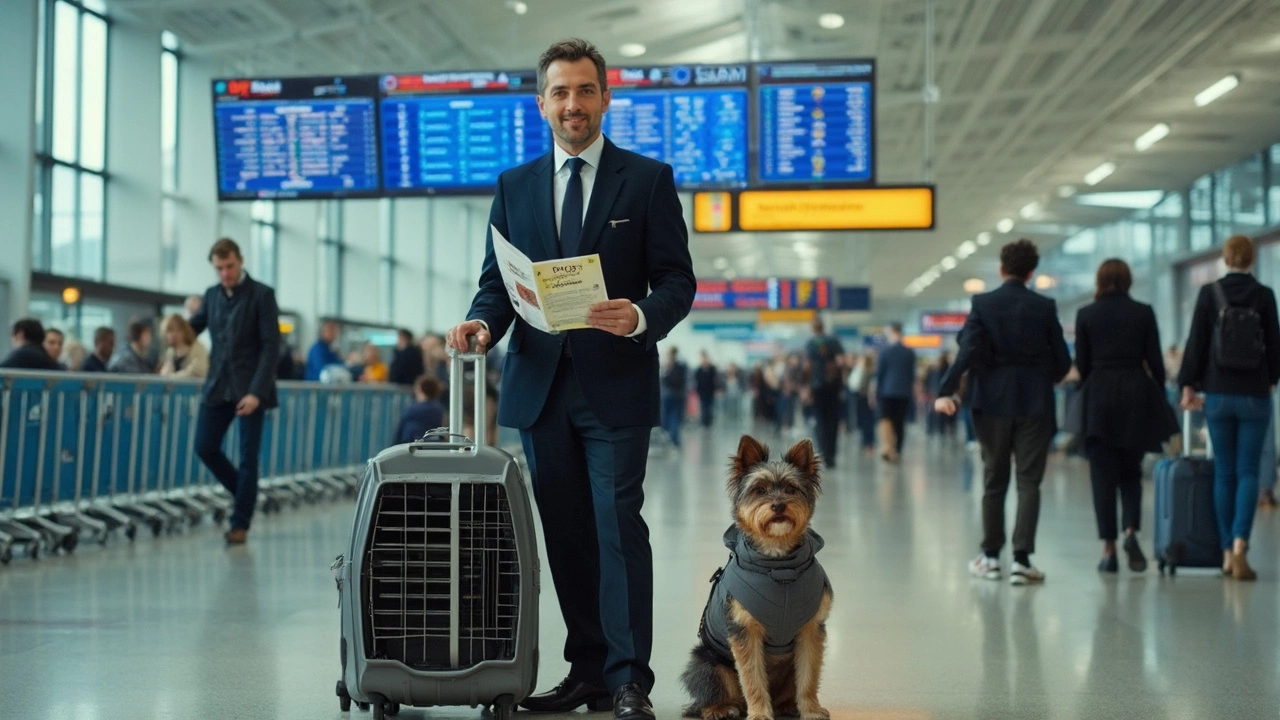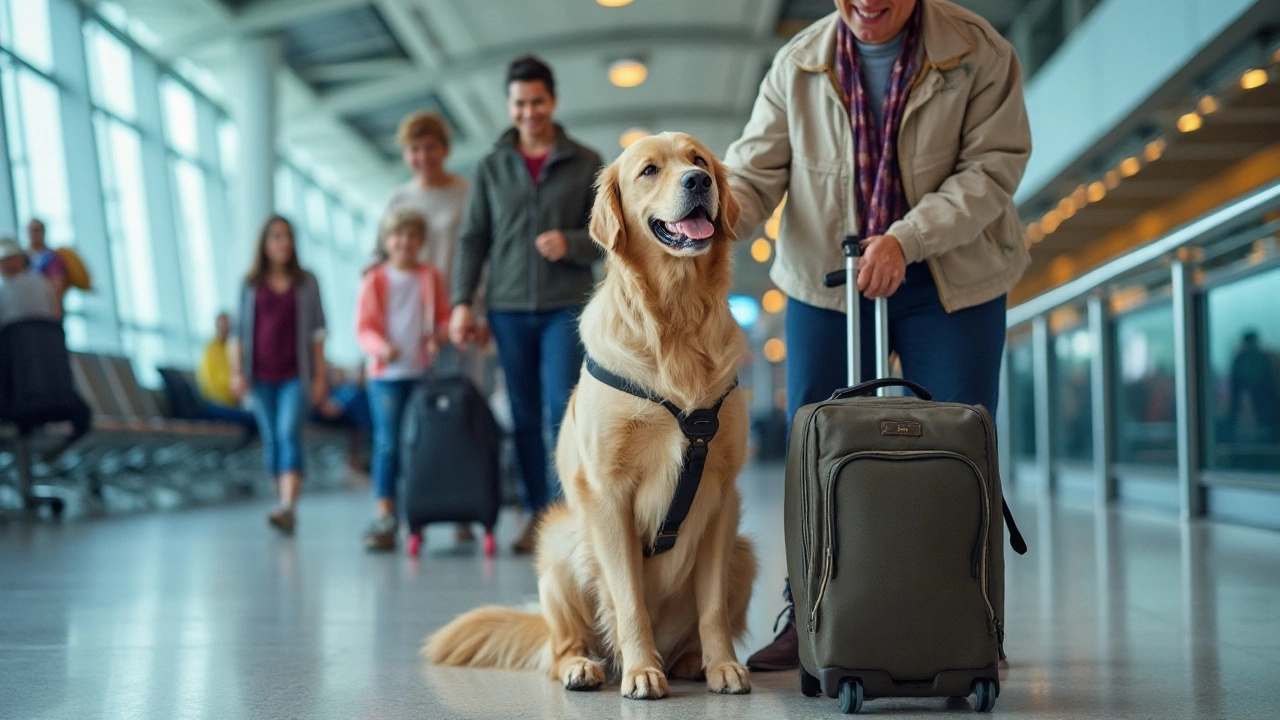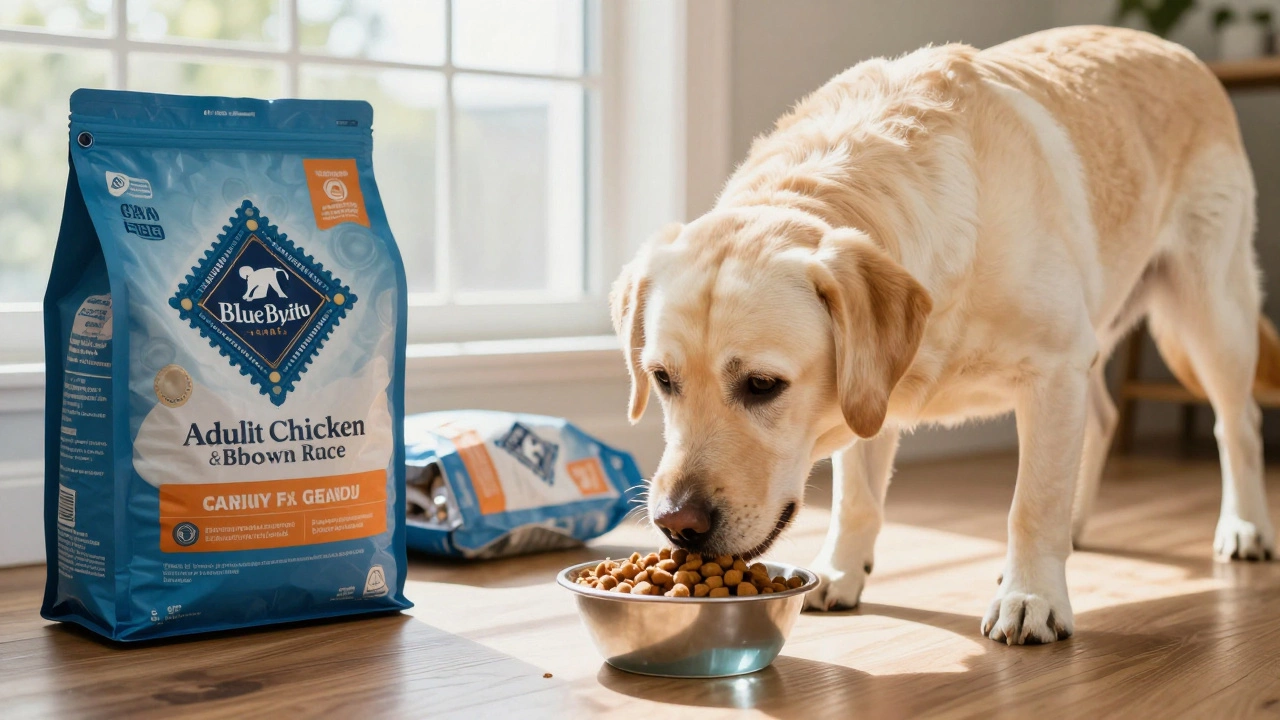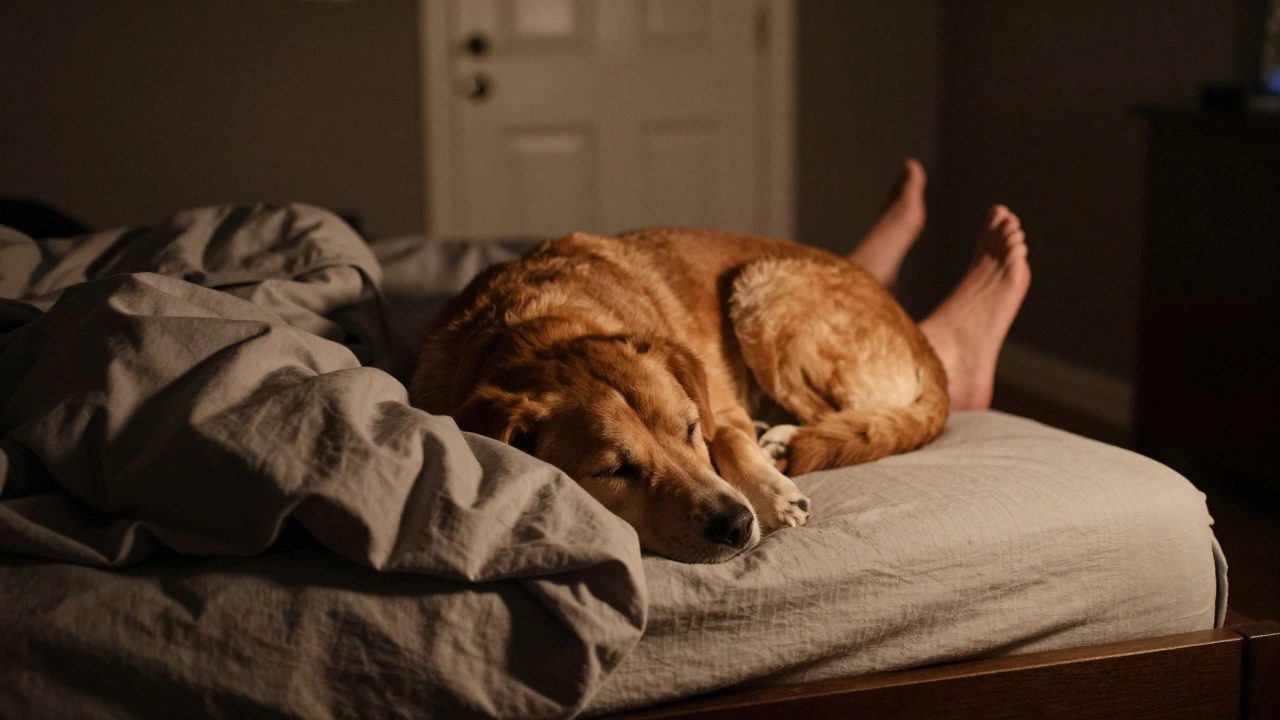Ever tried finding a flight where your 50 pound dog can stretch out beside you in the cabin? Prepare for a reality check—most airlines won't even let dogs half that size onboard as cabin pets. The standard rule is harsh: pet plus carrier almost always has to fit under the seat and weigh no more than 20 pounds (sometimes even less). You’ll rarely see any major airline in the US, Europe, or Asia budge on this. The only dogs flying in the cabin over that weight are usually official service animals, and those have strict documentation requirements.
So why so picky? It’s partly about space—those small under-seat spots are not built for Labradors. It’s also about safety, allergies, and fellow passenger comfort. Airlines take the rules seriously, and check size at the counter. There’s no sneaking in a big dog without someone noticing at security.
- Airline Cabin Pet Weight Limits: The Brutal Truth
- Why the Rules Are So Strict (and How Airlines Enforce Them)
- Possible Exceptions: Service Animals and Emotional Support
- Options for Large Dogs: What Actually Works
- Tips To Make Flying Easier With a Big Dog
Airline Cabin Pet Weight Limits: The Brutal Truth
Here’s the deal with bringing your dog into the plane cabin: the airlines pretty much all have a max weight limit. And it’s not even close to 50 pounds. Most major airlines cap the combined weight of your dog and their travel carrier at somewhere between 15 and 20 pounds. That’s smaller than your average beagle. You’ll see this rule plastered all over official airline pet policies—Delta, American, United, and even most international carriers play by the same numbers.
If you’re thinking, “Eh, maybe there’s an airline that lets bigger dogs ride in the cabin,”—don’t get your hopes up. Airlines say the only way a dog can fly inside the cabin is if they fit under the seat in front of you, which is tight. Here’s a look at what some popular airlines say when it comes to cabin weight limits for pets:
| Airline | Pet + Carrier Max Weight | Carrier Dimensions |
|---|---|---|
| American Airlines | 20 lbs | 19" x 13" x 9" |
| United Airlines | 18 lbs | 18" x 11" x 11" |
| Delta | 20 lbs | 18" x 11" x 11" |
| JetBlue | 20 lbs | 17" x 12.5" x 8.5" |
| Air Canada | 22 lbs | 21.5" x 15.5" x 10.5" |
You might find airlines in some other countries allowing a pet up to 22 pounds (like Air Canada), but 50 pound dog? No way. The policies are strict and enforced. Even with a super-expensive ticket, there's just no way to get your bigger buddy in the cabin through the front door.
A few regional or private charter airlines might allow exceptions, but that’s rare, super pricey, and usually not an option for most folks. For commercial flights, the message is clear: if your dog can’t fit under the seat—both by size and by weight—it’s not happening. Save yourself airport stress by checking your airline’s pet policy way before you book, rather than crossing your fingers at the check-in counter.
Why the Rules Are So Strict (and How Airlines Enforce Them)
If you’re hoping to bring a 50 pound dog into the plane cabin, the reasons why airlines say “no” are more about logistics than being picky. First off, there’s just not enough room. Most airline seats are designed with a fixed space under the seat in front of you, and that space measures only about 17 by 12 inches on average. Even if your dog was okay squeezing in, airlines don’t want to risk crowding the aisle or your neighbor’s feet.
Another big factor: safety. Airlines follow strict rules from organizations like the FAA (Federal Aviation Administration) and IATA (International Air Transport Association) that limit what can go in the cabin. Sudden turbulence happens all the time, and a larger animal could become a risk for injuries or block emergency exits.
Allergies and passenger comfort count, too. A lot of people fear dogs or have pet allergies. A bigger dog means bigger odds of an allergy attack or a nervous passenger drama. Airlines try to keep the peace by making sure pets are small and usually tucked away during the flight.
The rules aren’t just for show. Airlines actually check:
- Pet weight (plus carrier!) at check-in.
- Carrier size, making sure it fits their specific under-seat measurements.
- Updated vet records with vaccination proof (for the animal’s and passengers’ safety).
If you miss on any requirement, the airline will either send your pet to cargo—if there’s space—or refuse boarding altogether. No exceptions, unless it’s a registered service dog. There’s usually a limit on the number of pets allowed per flight, so booking last minute with hopes to sneak your pooch in isn’t going to work either.
Here’s a quick breakdown of what some big airlines allow:
| Airline | Max Pet Weight in Cabin (lbs) | Max Carrier Size (inches) |
|---|---|---|
| American Airlines | 20 | 19 x 13 x 9 |
| Delta | 20 | 18 x 11 x 11 |
| United | 18 | 18 x 11 x 11 |
| JetBlue | 20 | 17 x 12.5 x 8.5 |
The message is clear: the cabin is built for humans and the tiniest of pets, not medium or large dogs. If you’re set on flying with your bigger dog, you’re looking at cargo or a specialized pet charter service.
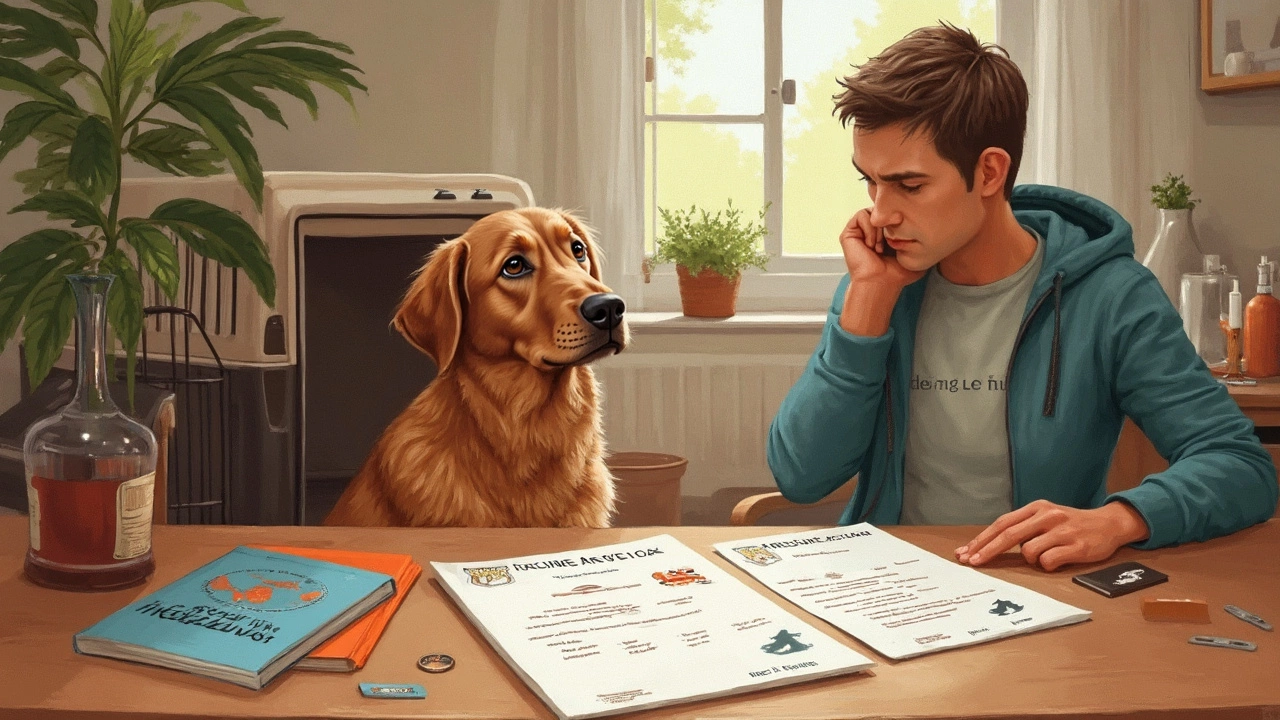
Possible Exceptions: Service Animals and Emotional Support
If you’ve ever seen a large dog walk down the aisle of a plane, chances are it was a trained service animal, not just a pet. This is pretty much the only situation where a 50 pound dog flying in the cabin is allowed on almost any major airline. Service dogs can fly in the cabin regardless of their size, as long as they are helping a passenger with a disability. Airlines in the US follow the Department of Transportation’s (DOT) rules, and most require official paperwork before you board.
Here’s the catch: emotional support animals (ESAs) used to be cabin-legal on a lot of airlines, including big names like Delta and United. But as of early 2021, the DOT changed the rules. Now, airlines don’t have to treat ESAs the same as trained service animals. That means most big carriers completely stopped allowing ESAs in the cabin, no matter how convincing your doctor's note is.
"We have updated our policies to align with new DOT regulations—only trained service dogs are accepted in-cabin as working animals. Larger pets and emotional support animals must travel as cargo or checked pets."
— American Airlines Customer Support FAQ, 2024
Just so you know what airlines are actually doing, here’s a helpful table comparing the current rules:
| Airline | Service Dogs Allowed (Any Size)? | Emotional Support Animals Allowed in Cabin? |
|---|---|---|
| Delta | Yes | No |
| American | Yes | No |
| United | Yes | No |
| Lufthansa | Yes | No |
If you do need to bring a service animal, you’ll have to fill out DOT paperwork and confirm the animal is trained. This usually includes:
- Submitting a completed U.S. Department of Transportation Service Animal Air Transportation Form
- Letting the airline know at least 48 hours before your flight
- Making sure your dog is harnessed and well-behaved in public spaces
Bottom line? Unless your big dog is a trained service animal with all the official boxes checked, the odds of getting them in the main cabin are basically zero. And with ESAs mostly phased out, there aren’t many shortcuts left.
Options for Large Dogs: What Actually Works
If you’ve got a big dog—say a 50 pound dog—those cabin rules will shut you down fast. Still, people get creative. Here’s what’s actually possible if your best buddy is too big for the under-seat shuffle.
1. Cargo or Checked Baggage
Most airlines let dogs over 20 pounds travel as cargo or checked pets. It’s not as cozy, but it’s honestly the most common route for medium and big breeds. The dog travels in a hard carrier in a climate-controlled hold. Here’s how some major airlines stack up for large dog travel:
| Airline | Cabin Weight Limit | Cargo Available? | Notes |
|---|---|---|---|
| Delta | 20 lbs incl. carrier | Yes (restrictions apply) | Dog and crate total up to 100 lbs |
| United | 18 lbs incl. carrier | Yes (petSAFE program) | Suspends cargo during extreme weather |
| Air Canada | 22 lbs incl. carrier | Yes | No snub-nosed breeds |
| Southwest | 15 lbs incl. carrier | No | Cabin only, no cargo accepted |
Always double check: every airline has a page for pet travel, and the rules can change by season, destination, breed, and even the plane type. Booking as far in advance as possible makes a difference—larger pet slots are limited.
2. Private Charter Flights
This is the ultimate (and expensive) workaround. Some private jet services actually market themselves to pet lovers. Your big dog can sit right with you, no crate, no fuss. Chartering is far from cheap—most folks are paying $10,000 and up for even a short flight—but if money’s less of a concern, it’s a direct path to no airline hassles. A couple of companies to Google: JSX and K9 Jets.
3. Ground Travel Alternatives
- Amtrak: Dogs up to 20 pounds in the US, but some regional trains outside the US accept much bigger dogs. Check VicRail in Australia or certain French trains.
- Pet ground shipping companies: For cross-country moves, some families use trusted ground transporters who bring your dog in a van or RV, door-to-door. Look for companies that specialize in pets and have solid online reviews.
- Road trip: Actually, lots of people turn a move or a trip into a big car journey. You choose the route, the rest stops, the playlists—and your dog stays with you the whole time.
4. Service Dogs and Rare Medical Exceptions
Airlines are required by law to allow people with disabilities to travel with their trained service animals in the cabin, regardless of weight. But the paperwork requirements are stiff, and emotional support dogs no longer qualify on most US airlines. If you’re not legally disabled and your dog isn’t a genuine service animal, this isn’t a loophole you can use.
Bottom line: For most pet owners, flying with a 50 pound dog in the cabin just isn’t a thing. Options exist, but they come with paperwork, planning, and—sometimes—a big hit to your wallet.
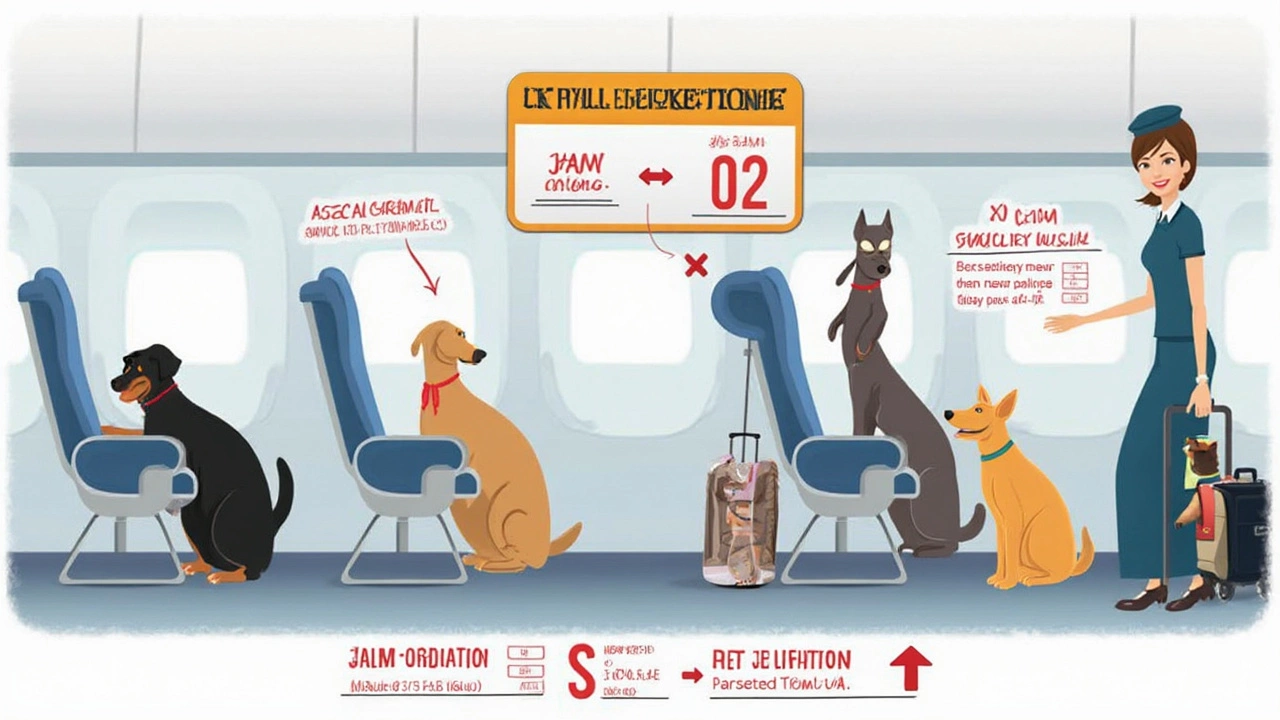
Tips To Make Flying Easier With a Big Dog
Traveling with a big dog like a 50 pound dog will almost always mean cargo or special pet transport, so making the journey smoother is all about prep. Nobody wants a rough flight—especially your dog. Here’s how you can take some of the stress out of a long-haul:
- Check airline policies early: Every airline is different. Some allow larger dogs as checked baggage, some only as air cargo, and prices can jump fast. Call customer service and read everything—don’t just trust a website chart.
- Get the right crate: A sturdy, IATA-approved kennel is non-negotiable. Your dog should be able to stand up, turn around, and lie down. Airlines will reject a crate that’s too small or flimsy.
- Microchip and ID tags: Make sure your dog is microchipped, and double-check that all ID tags are readable and firmly attached to both dog and crate.
- Book direct flights: Fewer connections means less time in crates, less risk of mishandling, and a shorter overall trip for your dog.
- Familiarize your dog with the crate: A couple weeks before travel, get your dog comfortable spending time in the crate, eating meals inside it, and even sleeping there if possible.
- Bring comfort items: Toss in a washable bedding item that smells familiar, and a favorite safe chew or toy (airline-approved, of course).
- Time meals and exercise: Feed your dog a small meal about four hours before check-in, and give a good walk just before you head into the airport.
- Know destination and layover rules: Some airports require advance notice for live animal transit or have quarantine rules. Plan for water and bathroom breaks when you land, too.
Here’s a quick comparison of what it looks like to fly with a big dog in-cabin vs. large dog cargo:
| Aspect | Cabin Pet (Small) | Checked/Cargo (Large Dog) |
|---|---|---|
| Weight Limit | Usually 20 lbs or less incl. carrier | No carrier limit, but max usually 100-150 lbs including crate |
| Location on Plane | Under seat in cabin | Cargo hold (pressurized, temp-controlled) |
| Cost (typical) | $125-200 (US Domestic) | $200-1,000+ (varies by route/size) |
| Booking Process | Add-on at booking/call airline | May need advance booking, health certs |
Extra tip: Some companies, like PetSafe by United and Delta Cargo, specialize in caring for pets as cargo with extra checks and handlers, but always research recent reviews or airline changes before you book—pet policies update a lot, sometimes after incidents.

